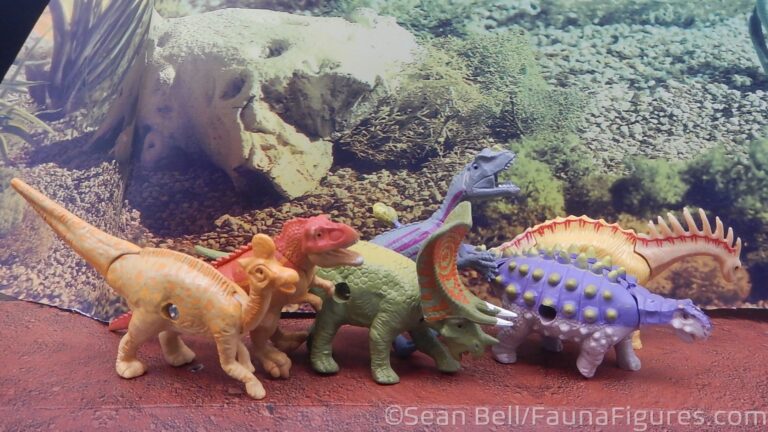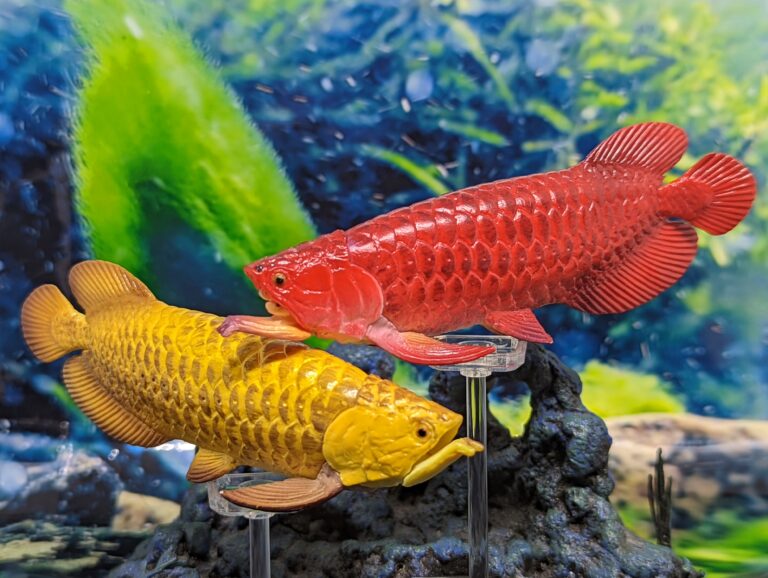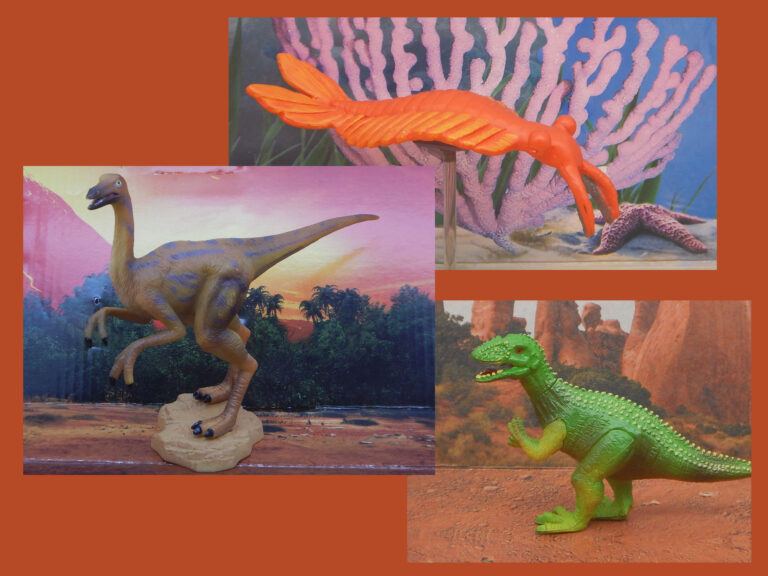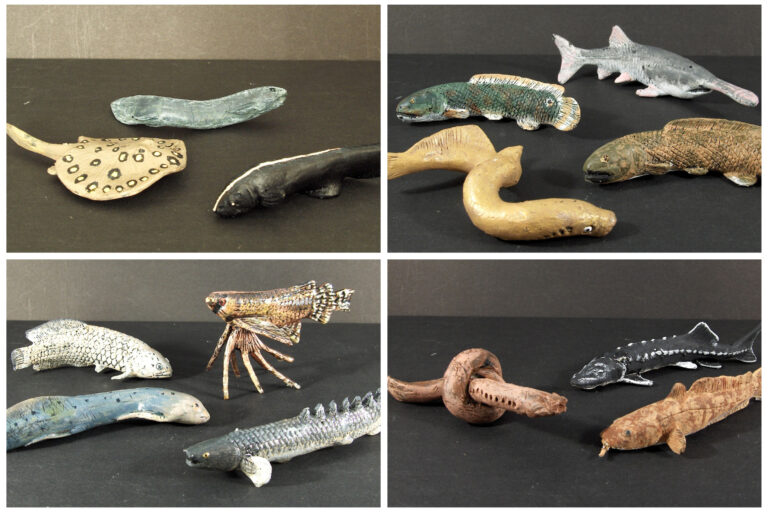What is this? Another Run the Set already!? It really is, with another take on prehistoric figures from COG. In this instance it’s a lot of fake fossils, just like the Safari Ancient Fossils toob. Does it hold up?
What are these? These models are from a COG Ltd series called Ein-O-Science, small, inexpensive science-lab kits that provided small science experiments or activities on all kinds of fields of study. In our home we’ve had ones regarding electricity, renewable energy, aerodynamics, earth science, biology…there’s actually a huge range. Or was. I’m not really sure. And this particular one deals with fossils!
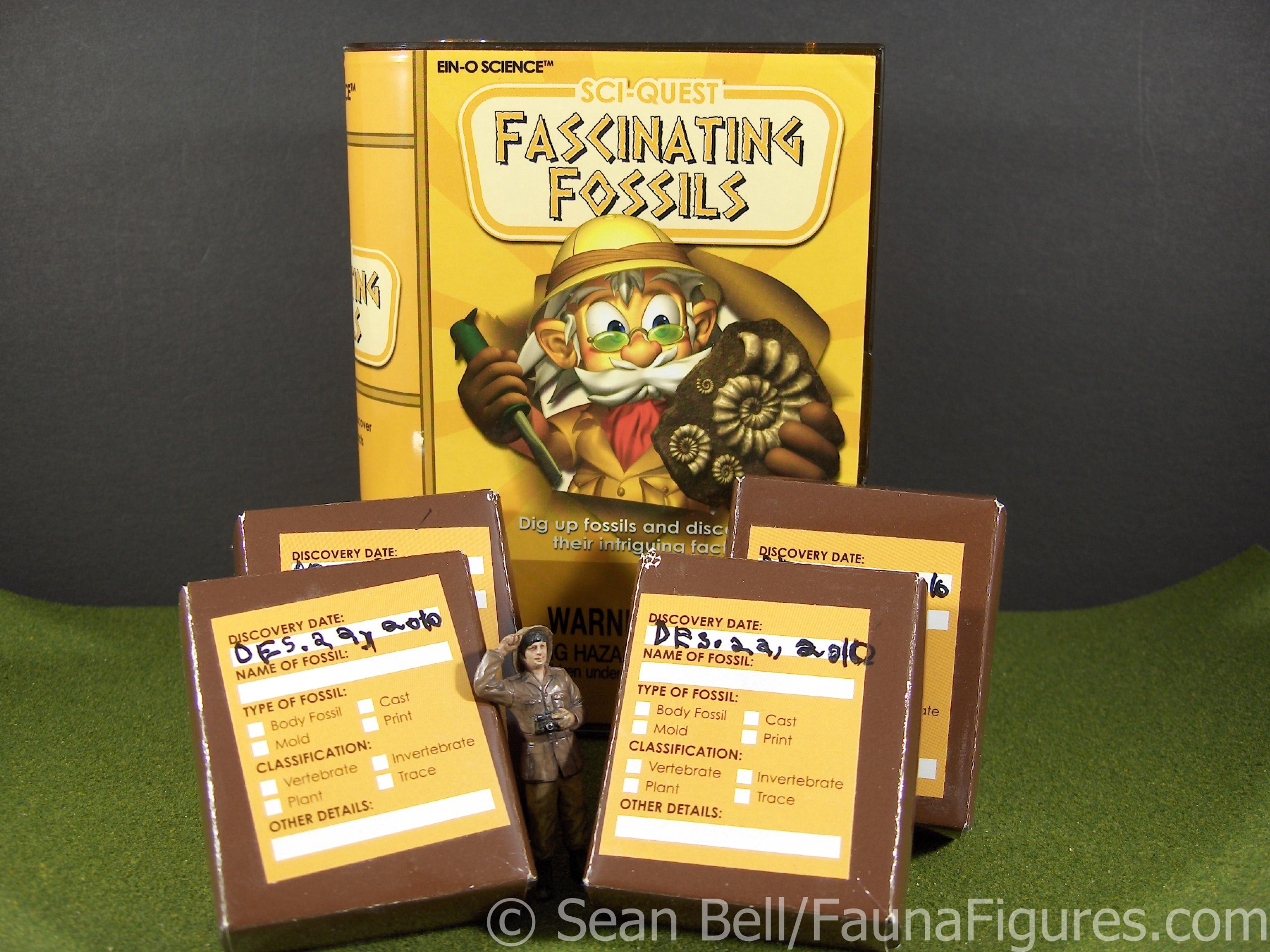
Any story about these? Our household has had a lot of dig kits. Of varying quality. Somewhere around here, we still have many of the tools from those kits. Many people are probably familiar. They feature fossils replicas (usually–I’ve seen ones with real fossils) made of rubber, PVC, plastic or resin, encased in some kind of solid-but-too-solid matrix, that are then meant to be removed through a process of digging and chipping with provided tools, just like a real palaeontologist! The material can be plaster, clay, sandstone, some kind of gravelly agglomerate or…other…and the tools may be wood, plastic or metal.
The Ein-O-Science ones came as four plaster-like blocks, with fossils storage boxes that you got to fold yourself! Plus a metal hammer/chisel tool and a booklet. All in a hinged plastic case. We’ve since lost the booklet, and the hammer is…somewhere…but we still have the fossils and specimen boxes, in the cases. You can see them in closed form in the above picture. The fossils themselves are pretty generic…and made of a soft, monochromatic rubber.
And now the figures:
Fossil starfish
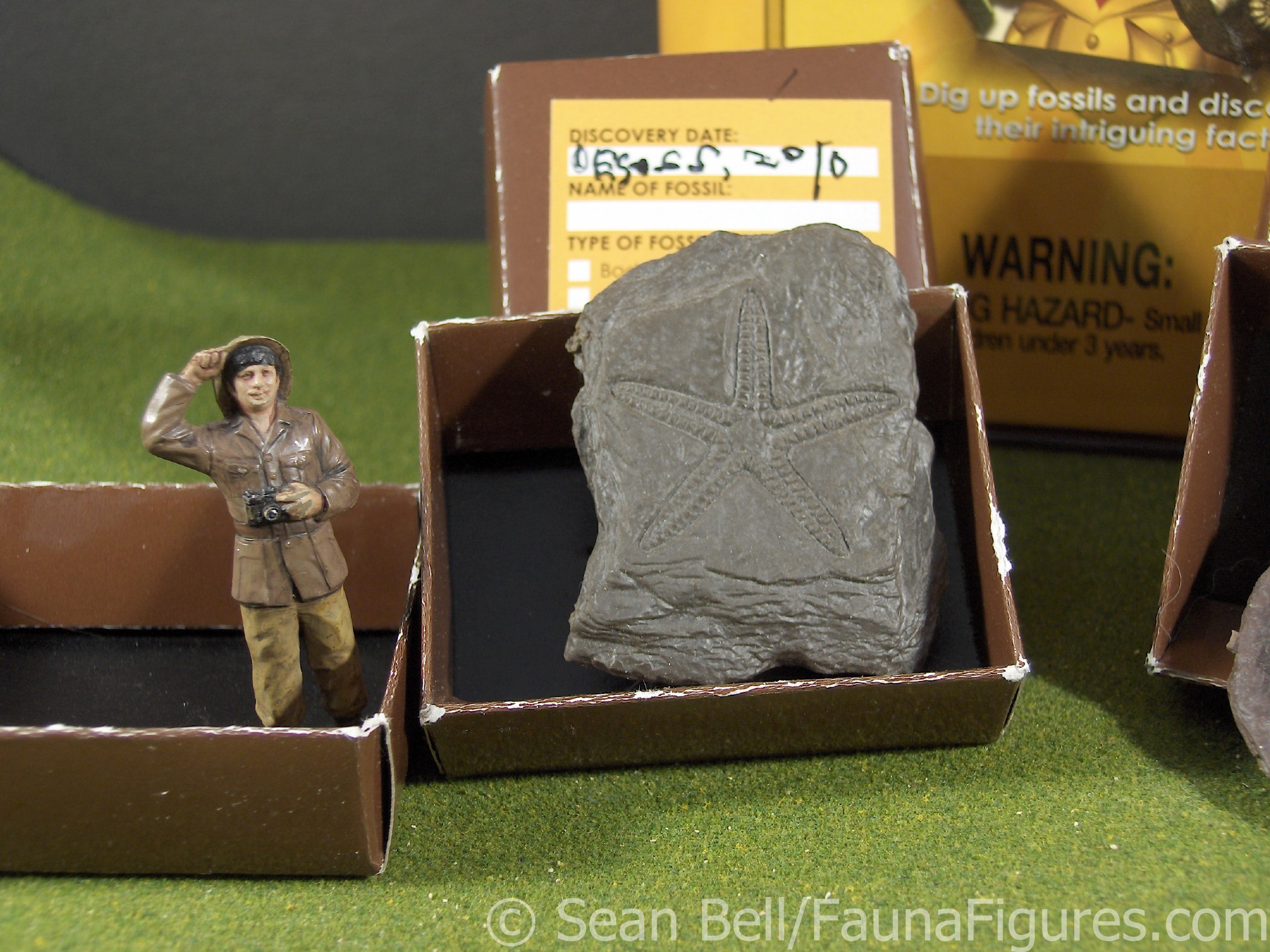
Okay, first things first, when I say generic, I mean generic. There was no reference to anything more than ‘broad group’ with these models. So as best as we can get this is a…generic starfish fossil? Possibly even a ‘trace’ fossil, since it looks more like the impression of a starfish underside. From the anytime since the Palaeozoic to before now (it is a fossil after all)? It’s about 3cm across, so these are not large (scale is tricky since even genus is a wild guess, probably 1:4 -1:5). As can be seen, they tried–the rubber matrix is the same uniform colour, but they tried to give it the appearance of layers like in a shale. That said, it’s unlikely that this could be identified by someone with only a passing familiarity. You may also be able to see that the boxes have specimen labels on them which is…kind of neat. Should have something for locality data as well but it’s a good effort. And apparently we got these in 2010. That’s probably my son’s handwriting…but honestly, mine’s not much different!
Ammonite (Perisphinctes?)
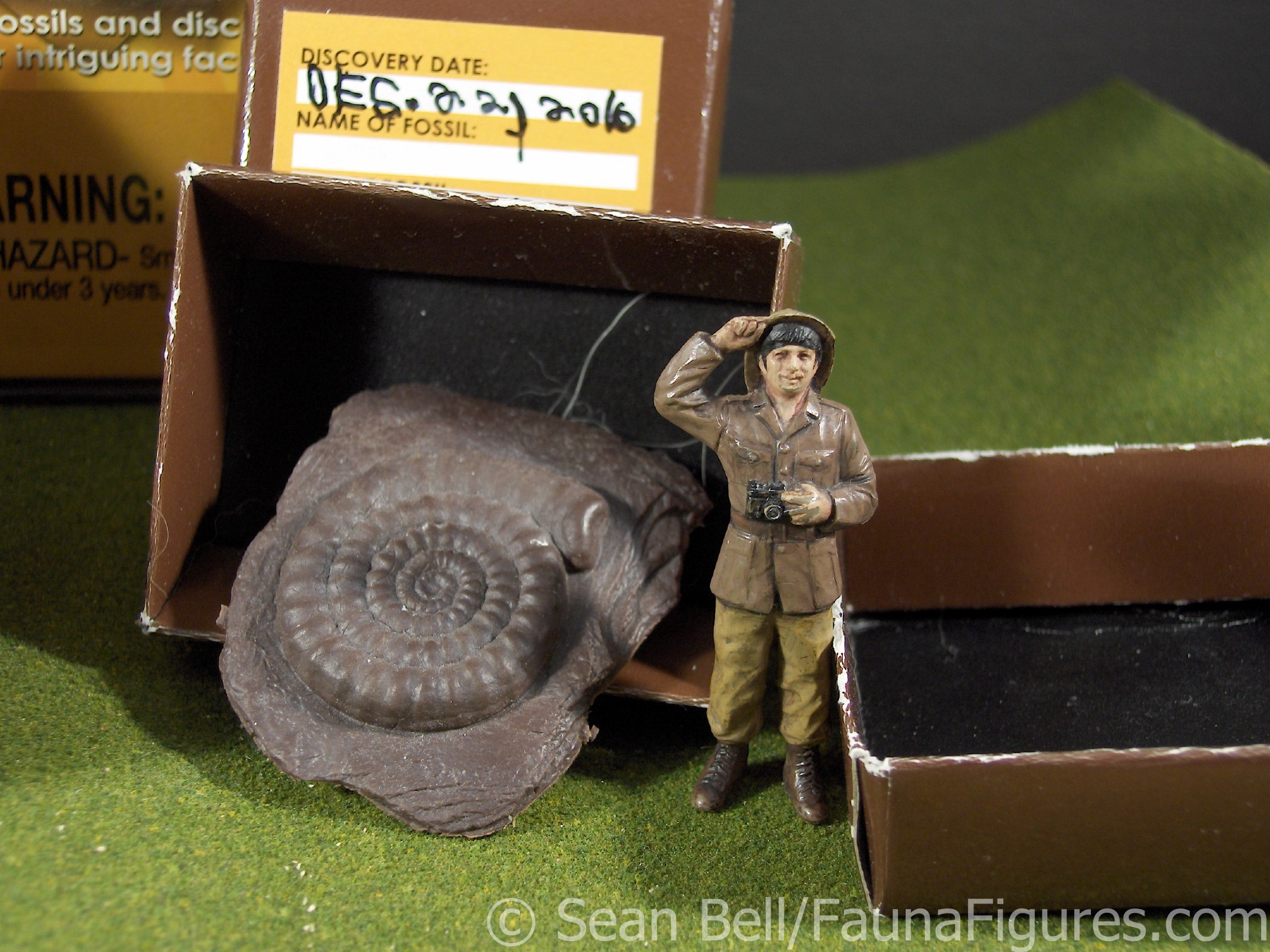
Our next one is a more traditionally familiar fossil/fake fossil. I think it could be Perisphinctes but honestly, that’s more because I have other models that are probably that genus, and they look similar. This one has a diameter of 3cm, so if I’m even kind of close with the ID, it’s about 1:4. At least we would know it’s probably Jurassic! It is probably meant to out as a cast of the fossil, if not the actual body fossil, based on the options on the labels. Using a uniform rubber cast kind of takes away from it a bit, and also obscures what it is supposed to be. Again, it’s a decent if generic effort.
Fossil Fern leaf
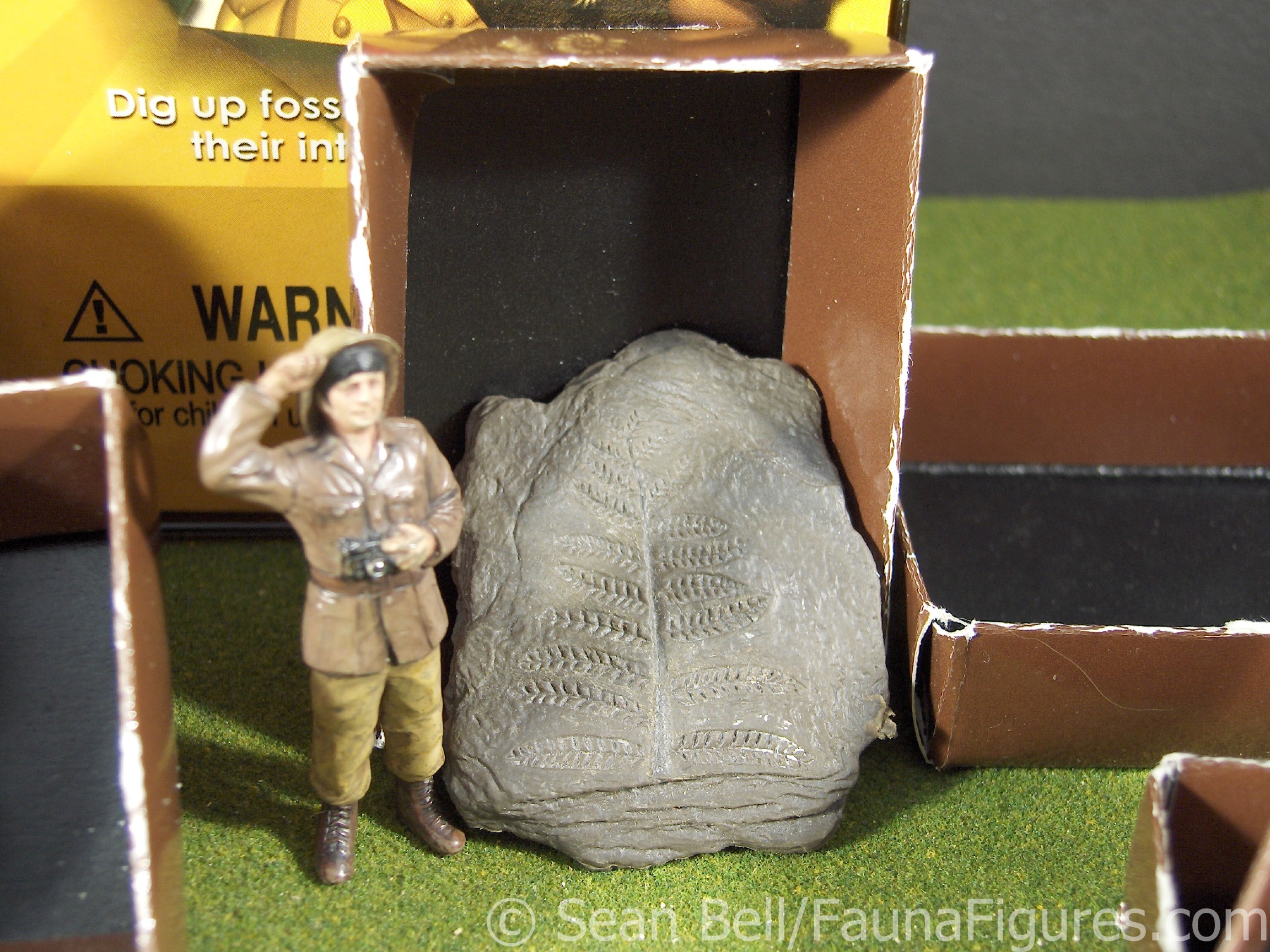
Okay, so this is kind of interesting. Despite plants being rather important to fossil history and biology overall, they are usually overlooked except as background, if ever, in prehistoric toys. And as fossil toys & replicas, even less. So it’s nice that they remembered them–and included one. It’s almost certainly meant to represent an impression–and given their options, a plant! Genus and age are of course completely indeterminate…and being a piece of a leaf, who knows what the scale would be; the ‘fossil’ is 3cm long.
Fossil trilobite (Phacopida?)
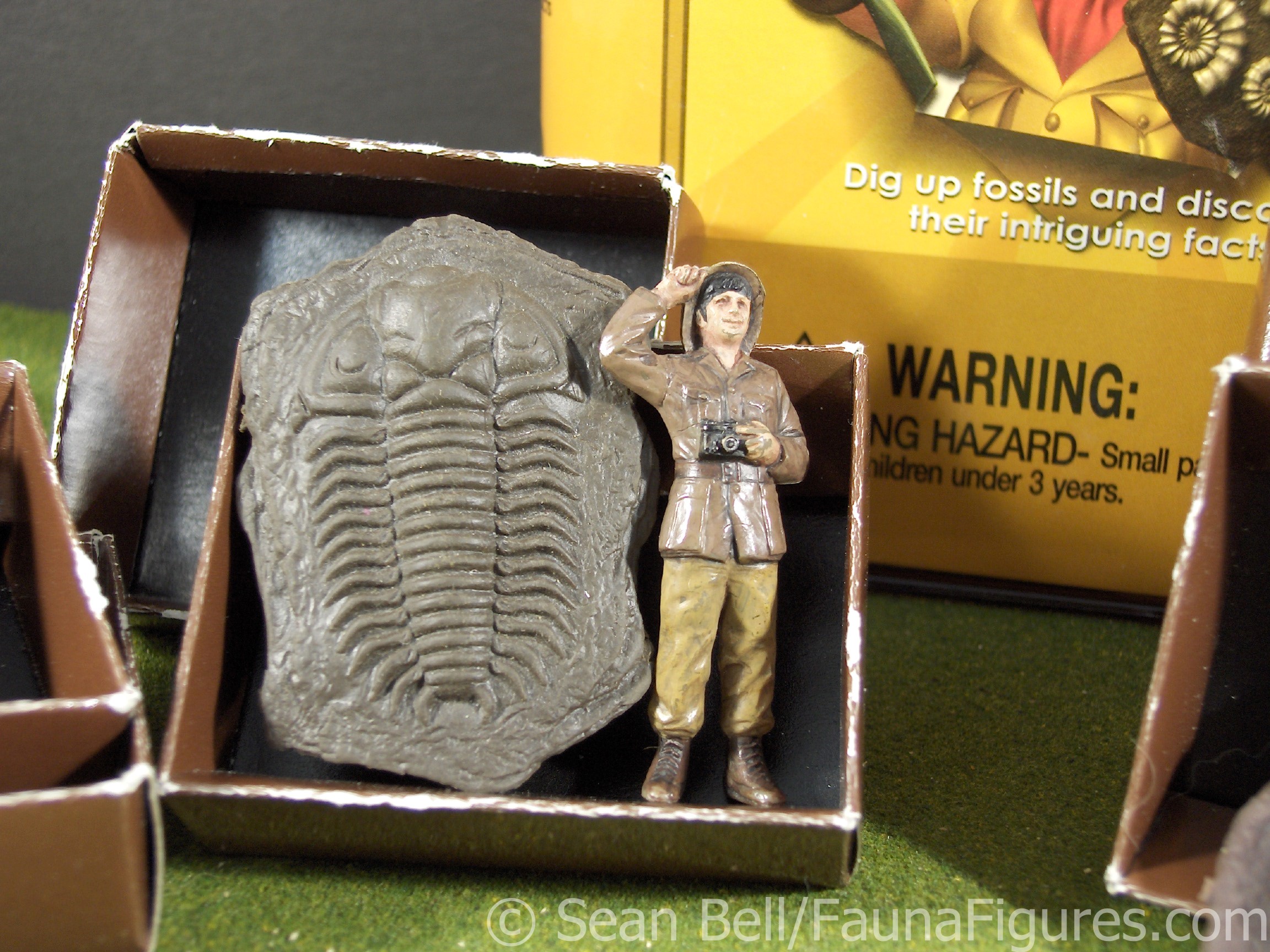
And, the last one, of course, is a trilobite. And a fairly distinct one at that–the big glabella and tiny pygidium (words I never use anymore) place it as inspired by a Phacopid trilobite of some kind. That means a fossil from the late Cambrian to the Devonian (still a big time range, but something for a basic toy). So that’s kind of cool that it’s somewhat identifiable (as with the ammonite, someone more specialized than me could probably identify it even better). It’s almost definitely a body fossil, although again it’s made of and the colour of the matrix, so not helpful. It is about 4cm long (the big figure!) and would probably be about 1:2, depending on exact genus.

As final thoughts for this small series of cheap fossil figures…it’s not bad. Not great–not on par with the Safari toob models, for example. But given what it is, they’re kind of fun. I know kids like breaking figures out of matrix of any kind, and the soft material here is probably more forgiving. They chose some unique organisms to represent, which is also a plus. The only downside is that the matrix looks and feels like the fossils…that should only be the case for traces and such. But, I would still recommend it (if it’s available, again, I have no idea) for people with kids that like fossils…or just want an good outside activity for a little while!



